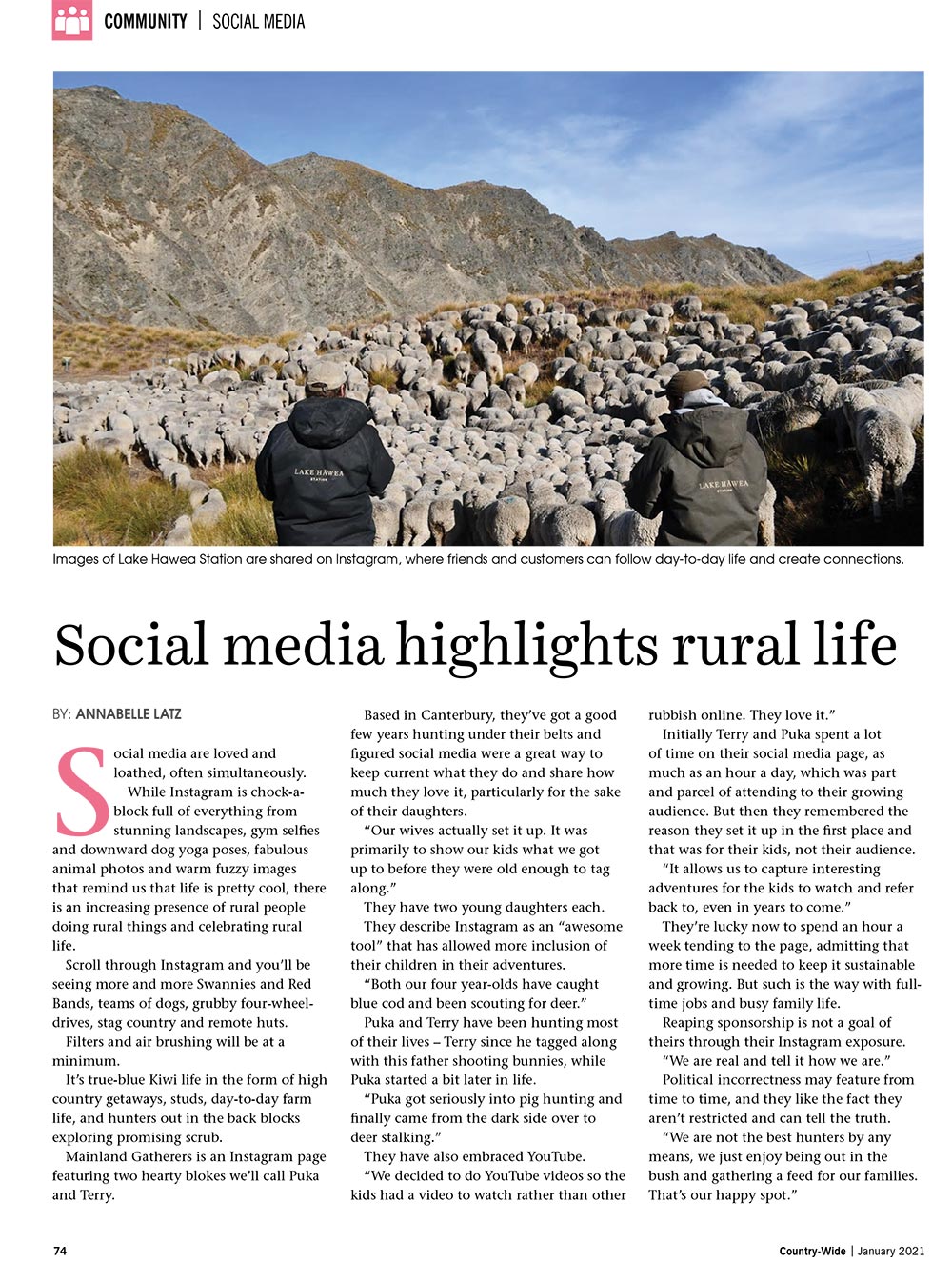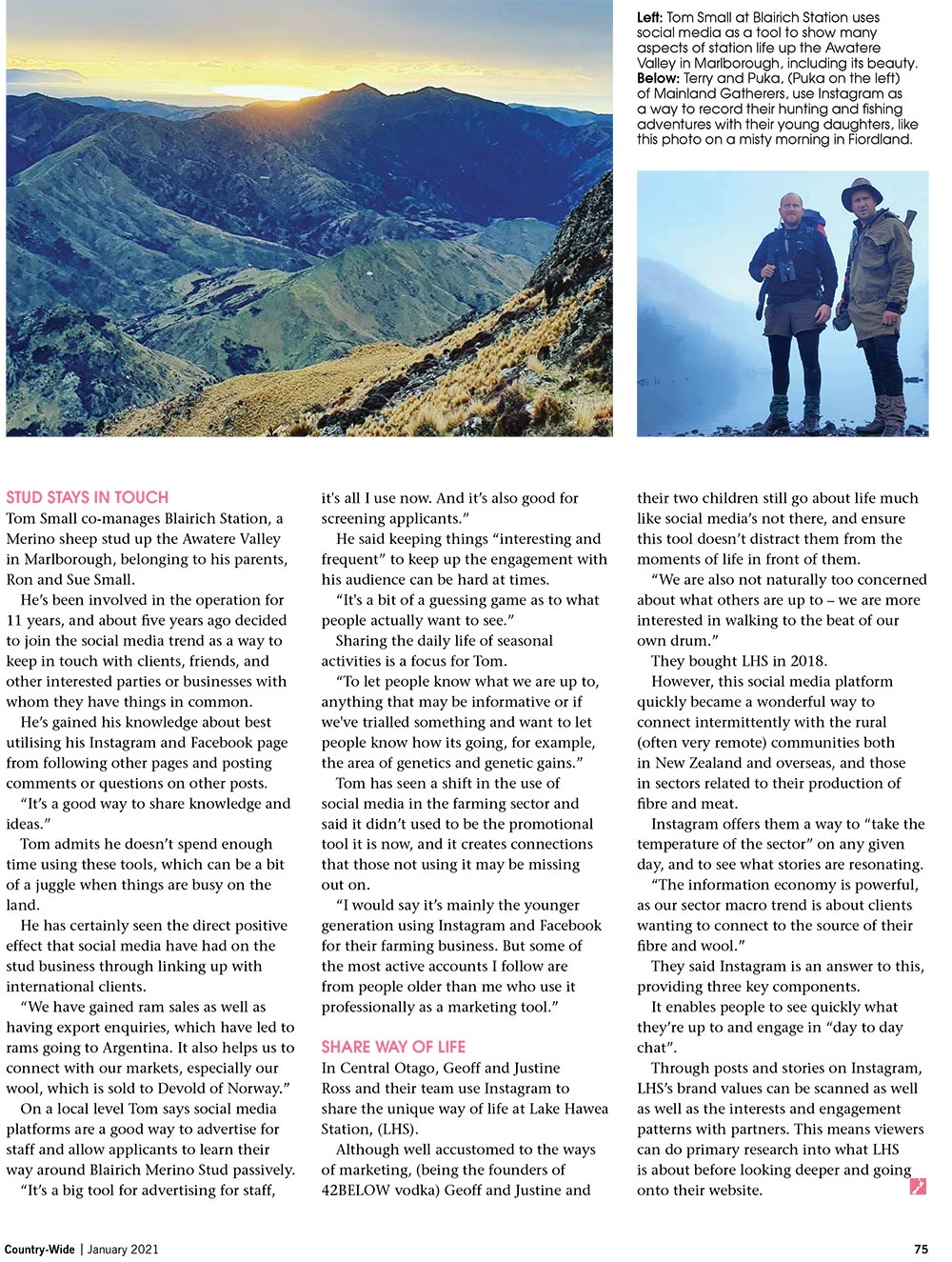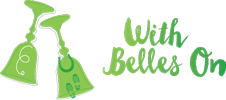Country Wide Magazine, January 2021.
By Annabelle Latz
Social media is loved and loathed, often simultaneously.
While Instagram is chock-a-block full of everything from stunning landscapes, gym selfies and downward dog yoga poses, fabulous animal photos and warm fuzzy images that remind us that life is pretty cool, there is an increasing presence of rural people doing rural things and celebrating rural life. Scroll through Instagram and you’ll be seeing more and more Swannies and Red Bands, teams of dogs, grubby four-wheel-drives, stag country and remote huts. Filters and air brushing will be at a minimum. It’s true-blue Kiwi life in the form of high country getaways, studs, day-to-day farm life, and hunters out in the back blocks exploring promising scrub.
Mainland Gatherers is an Instagram page featuring two hearty blokes we’ll call Puka and Terry. Based in Canterbury, they’ve got a good few years hunting under their belts and figured social media were a great way to keep current what they do and share how much they love it, particularly for the sake of their daughters.
“Our wives actually set it up. It was primarily to show our kids what we got up to before they were old enough to tag along.”
They have two young daughters each. They describe Instagram as an “awesome tool” that has allowed more inclusion of their children in their adventures.
“Both our four year-olds have caught blue cod and been scouting for deer.” Puka and Terry have been hunting most of their lives – Terry since he tagged along with this father shooting bunnies, while Puka started a bit later in life.
“Puka got seriously into pig hunting and finally came from the dark side over to deer stalking.”
They have also embraced YouTube.
“We decided to do YouTube videos so the kids had a video to watch, rather than other rubbish online. They love it.”
Initially Terry and Puka spent a lot of time on their social media page, as much as an hour a day, which was part and parcel of attending to their growing audience. But then they remembered the reason they set it up in the first place and that was for their kids, not their audience.
“It allows us to capture interesting adventures for the kids to watch and refer back to, even in years to come.”
They’re lucky now to spend an hour a week tending to the page, admitting that more time is needed to keep it sustainable and growing. But such is the way with fulltime jobs and busy family life. Reaping sponsorship is not a goal of theirs through their Instagram exposure.
“We are real and tell it how we are.”
Political incorrectness may feature from time to time, and they like the fact they aren’t restricted and can tell the truth.
“We are not the best hunters by any means, we just enjoy being out in the bush and gathering a feed for our families. That’s our happy spot.”
STUD STAYS IN TOUCH
Tom Small co-manages Blairich Station, a Merino sheep stud up the Awatere Valley in Marlborough, belonging to his parents, Ron and Sue Small. He’s been involved in the operation for 11 years, and about five years ago decided to join the social media trend as a way to keep in touch with clients, friends, and other interested parties or businesses with whom they have things in common.
He’s gained his knowledge about best utilising his Instagram and Facebook page from following other pages and posting comments or questions on other posts.
“It’s a good way to share knowledge and ideas.” Tom admits he doesn’t spend enough time using these tools, which can be a bit of a juggle when things are busy on the land. He has certainly seen the direct positive effect that social media have had on the stud business through linking up with international clients.
“We have gained ram sales as well as having export enquiries, which have led to rams going to Argentina. It also helps us to connect with our markets, especially our wool, which is sold to Devold of Norway.”
On a local level Tom says social media platforms are a good way to advertise for staff and allow applicants to learn their way around Blairich Merino Stud passively.
“It’s a big tool for advertising for staff, it’s all I use now. And it’s also good for screening applicants.”
He said keeping things “interesting and frequent” to keep up the engagement with his audience can be hard at times.
“It’s a bit of a guessing game as to what people actually want to see.”
Sharing the daily life of seasonal activities is a focus for Tom.
“To let people know what we are up to, anything that may be informative or if we’ve trialled something and want to let people know how its going, for example, the area of genetics and genetic gains.”
Tom has seen a shift in the use of social media in the farming sector and said it didn’t used to be the promotional tool it is now, and it creates connections that those not using it may be missing out on.
“I would say it’s mainly the younger generation using Instagram and Facebook for their farming business. But some of the most active accounts I follow are from people older than me who use it professionally as a marketing tool.”
SHARE WAY OF LIFE
In Central Otago, Geoff and Justine Ross and their team use Instagram to share the unique way of life at Lake Hawea Station, (LHS).
Although well accustomed to the ways of marketing, (being the founders of 42BELOW vodka) Geoff and Justine and their two children still go about life much like social media’s not there, and ensure this tool doesn’t distract them from the moments of life in front of them.
“We are also not naturally too concerned about what others are up to – we are more interested in walking to the beat of our own drum.”
They bought LHS in 2018. However, this social media platform quickly became a wonderful way to connect intermittently with the rural (often very remote) communities both in New Zealand and overseas, and those in sectors related to their production of fibre and meat. Instagram offers them a way to “take the temperature of the sector” on any given day, and to see what stories are resonating.
“The information economy is powerful, as our sector macro trend is about clients wanting to connect to the source of their fibre and wool.”
They said Instagram is an answer to this, providing three key components. It enables people to see quickly what they’re up to and engage in “day to day chat”.
Through posts and stories on Instagram, LHS’s brand values can be scanned as well as well as the interests and engagement patterns with partners.
This means viewers can do primary research into what LHS is about before looking deeper and going onto their website.
“We decided to do YouTube videos so the kids had a video to watch, rather than other rubbish online. They love it.”
See the article online here


